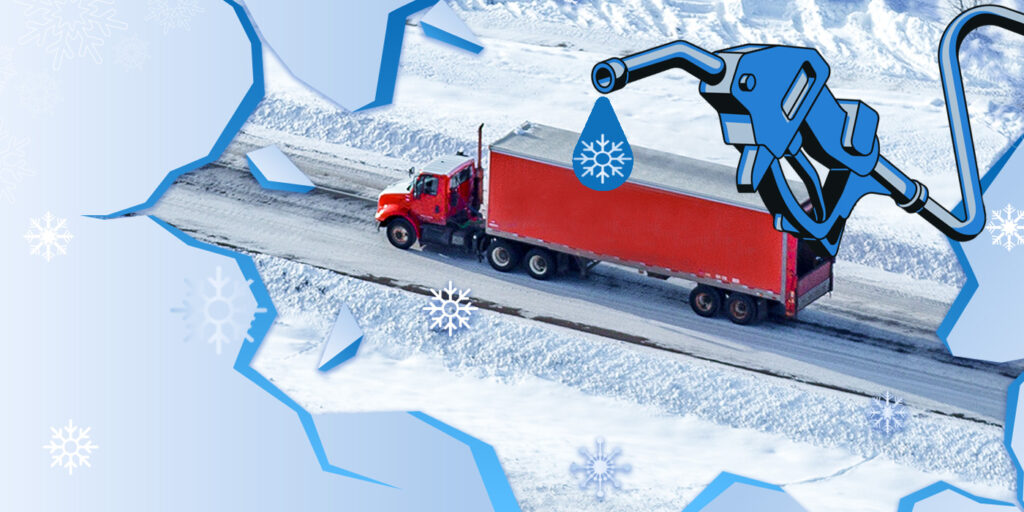It’s hard to imagine right now, but it’s actually time to start planning for the colder months that will be here before we know it. Here are the questions I hear most frequently while helping fleets make sure they have the right biodiesel blend for winter.
Can I use biodiesel in the cold?
The short answer is yes. Let’s address the misconception that biodiesel does not work well in cold weather: Fleets have driven millions of miles in below-freezing temperatures on blends up to B20, which is 20% biodiesel and 80% petroleum diesel. Sure, biodiesel’s Cloud Point (the temperature at which wax crystals cause fuel to appear cloudy) matters, but let’s not forget that the same is true for petroleum diesel. Proper blending, storage and handling—along with the use of good winter fuel additives—are the keys to success with both biodiesel and petroleum diesel.
How do I determine the right blend to use?
The Cloud Point of the biodiesel blend determines the storage temperature of the fuel. For blends up to 30% biodiesel, heated and insulated tanks are not typically needed, except in extremely cold climates. It is recommended that B100 and B99 be stored in heated and insulated tanks.
Take extra precautions in extreme cold (or work with a supplier/retailer who does). Above-ground storage and handling systems—including pipes, tanks and pumping equipment—should be protected with insulation, agitation, heating systems or other measures if temperatures regularly fall below the Cloud Point.
If you blend your own fuel, it’s important to know the cold weather specifications for both your base diesel fuel and biodiesel before blending. Then, follow these guidelines:
- Blend biodiesel with petroleum diesel while keeping both fuels at least 10º F above their respective Cloud Points. The warmer the biodiesel, the better it will blend. A blending temperature of 70º F or higher is ideal.
- If pumping biodiesel in cold weather through a conventional fuel pump, keep the hose and supply line to the pump equally protected from the cold.
- Avoid introducing biodiesel directly into a cold and empty tank.
You may find reason to switch to lower blends on the very coldest days, but it’s unlikely you need to eliminate blends from your winter lineup completely.
What properties should I Iook for in the biodiesel?
As mentioned in the tips above, Cloud Point is an important factor in choosing biodiesel. For example, the lineup from my company, REG, includes three different Cloud Point options which can be used in different blend ratios and regions across the U.S. depending on the time of year.
You should also know whether the biodiesel is distilled or undistilled. Distillation is a purification process that does a better job at removing minor components, such as steryl glucosides, that can cause issues in cold weather. A distilled B10 blend will perform better in the cold than an undistilled B10 blend with the same Cloud Point.
How easy is it to switch blend levels?
It’s pretty simple if you are strategic. If you blend the fuel yourself, you should follow the tips mentioned earlier. Blending systems make it pretty simple to switch blend levels based on weather, economics or other factors.
If you are buying pre-blended fuel, you’ll want to choose a supplier or retailer offering the blend level(s) you need. If the weather changes quickly, a good fuel supplier will add fuel to the tank to get to the blend level that fleets need.
Things to consider when choosing a fuel supplier: Do they offer distilled biodiesel? Different Cloud Points? Will they provide flexibility on your contract rather than locking you in? If you have B5 scheduled and it’s a mild winter and you want to take advantage of the performance, environmental and financial benefits of a higher blend, can they deliver those higher blends?
What other help can I get?
A knowledgeable biodiesel producer or supplier should be able to help you create a blending program based on seasonality and your unique needs. These programs range from detailed plans that can change week to week, depending on the weather, to broad plans that cover an entire season.
If you have additional questions about biodiesel blend use in colder temperatures, I’d be happy to connect.
Steve Klein is senior manager of marketing at Renewable Energy Group, a biodiesel and renewable diesel producer. He can be reached at [email protected].














